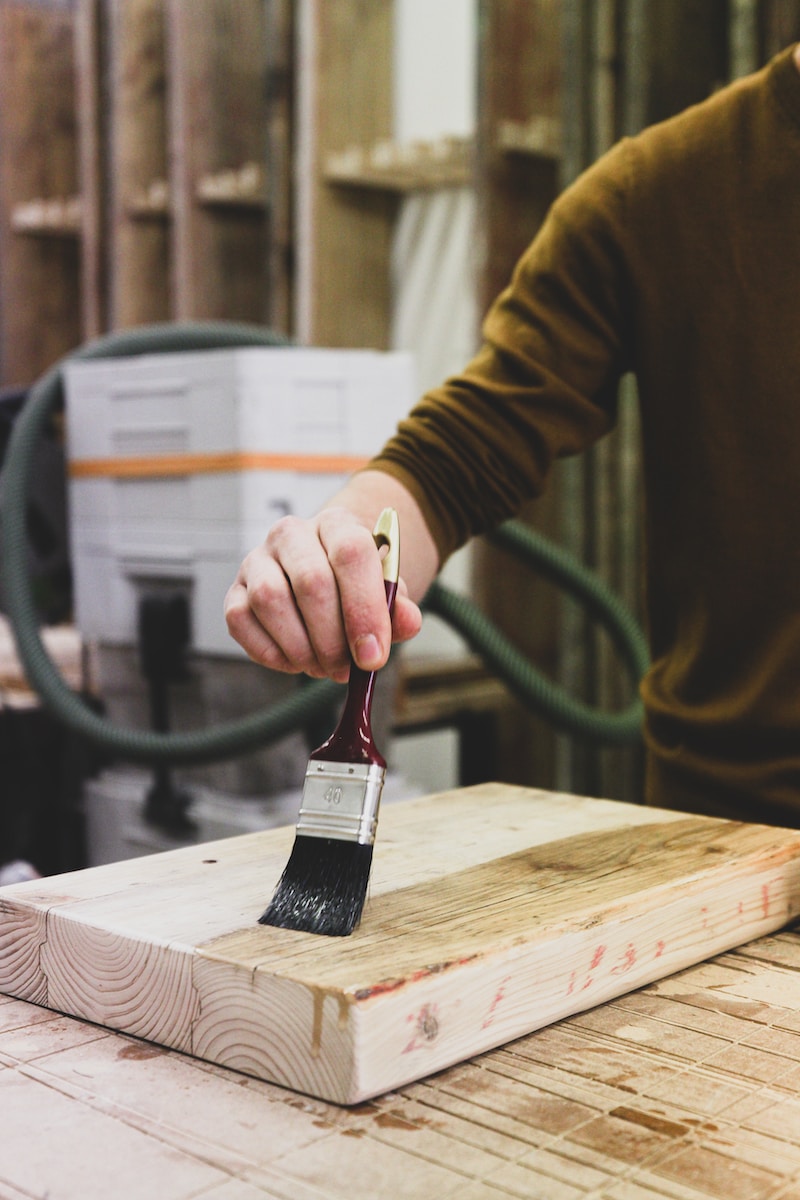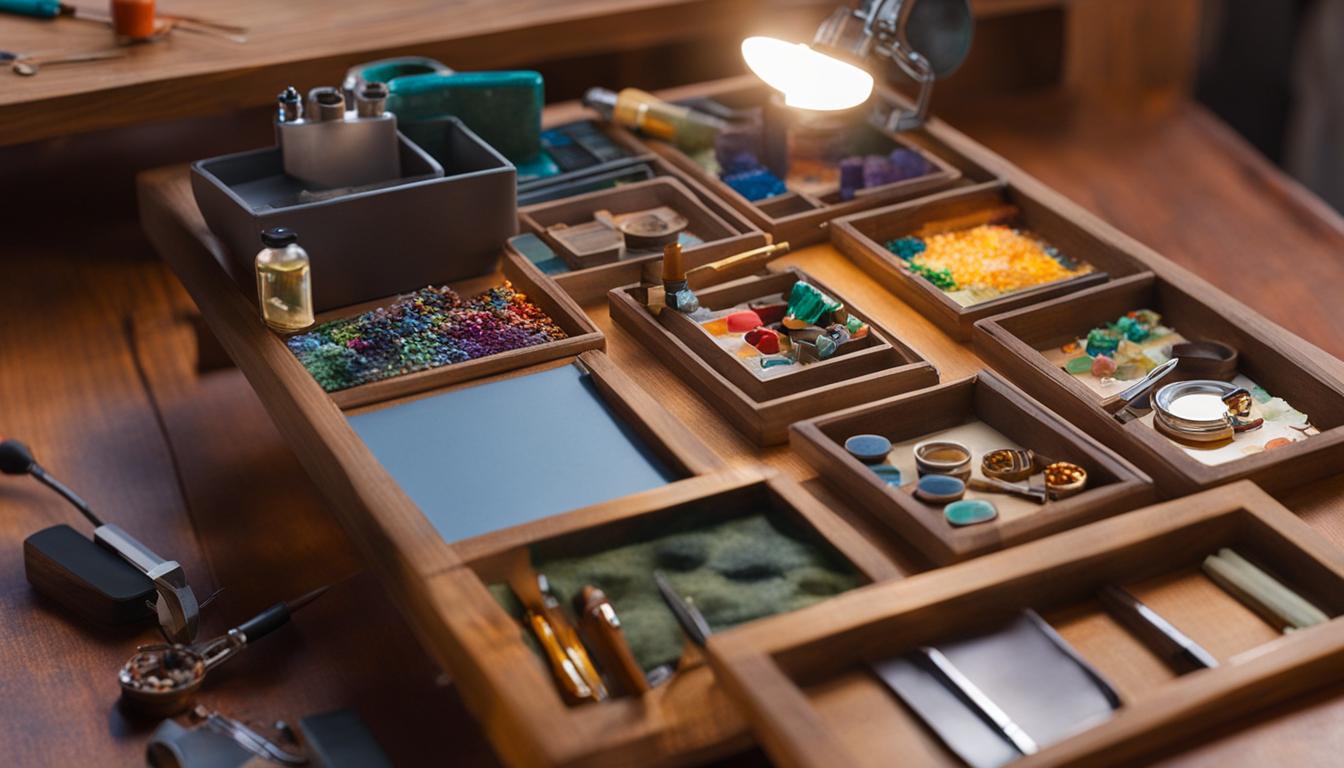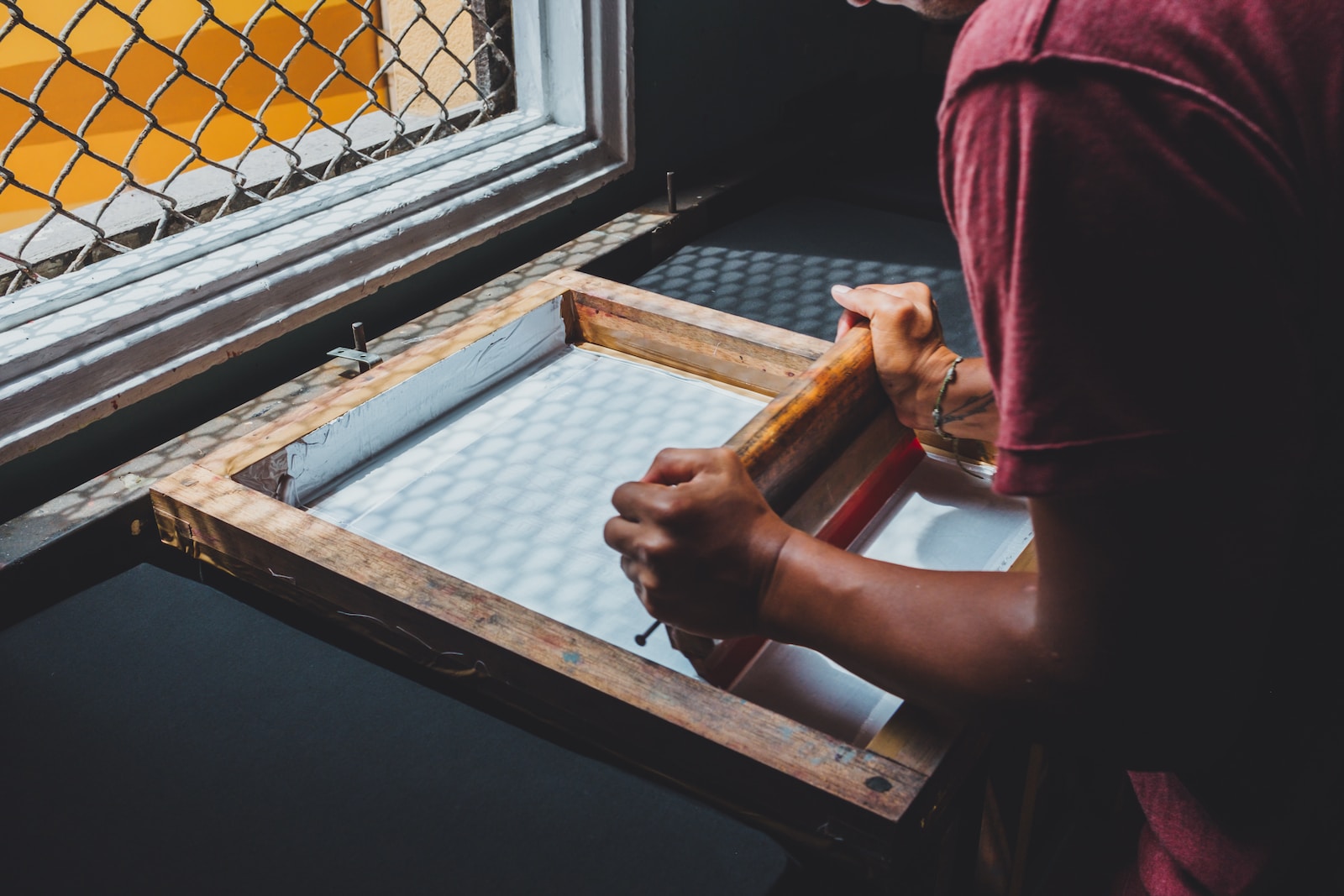Polishing wood is not just a menial house chore; it’s a sacred art form that requires finesse and knowledge. It’s the science of protection, the craft of aesthetic enhancement, and the embodiment of respect for one’s possessions. To view wood polishing as merely an act of cleaning is to belittle a tradition steeped in ritualistic care and meticulous preservation.
This unassuming task is an elaborate dance between various elements—wood, the artisan, environmental factors, and most importantly—the medium that mediates this intricate interaction: the humble polish. It sings songs of preservation on your furniture’s surface while whispering tales of luster into its very grain!
The Art of Wood Polishing: More Than Meets the Eye
The artistry embedded in wood polishing transcends superficial sheen—it’s about understanding the narrative etched in each grain pattern, honouring its unique personality, preserving its rich history! It’s not merely about applying a shiny layer; it involves channelling one’s inner botanist to comprehend the nature of timber—an organic material eternally at odds with time.
The kindred spirits who delve into this noble pursuit recognize that each piece holds a story. That antique armoire standing proudly in your living room?
Its polished surface undulates with tales from bygone eras—a testament to battles fought against decay under different custodians. Respect these stories; let them flourish under your care!
Wax and Oil: The Two Titans of Timber Treatment
In this world where we dance our delicate ballet with timber texture and tone, two key players have emerged as leading forces—wax and oil. These stalwarts have been perennial partners for ages past but have always found themselves pitted against each other—each claiming dominion over their shared kingdom. Wax presents itself as an imposing fortress—a protective barrier boasting brilliance unparalleled while oil flaunts its deep connections—a nutrient-rich elixir seeping into timber fibers promising lasting vibrancy.
In this ongoing tussle between gloss and guard—which offers superior protection? This is a question worth ruminating upon!
The Nature of Wood: A Brief Overview
Understanding the Vulnerability of Wood: The Soft Underbelly of Our Hardwood Heroes
In an age where synthetic materials and plastic parodies try to mimic the grandeur of real wood, it’s easy to forget just how vulnerable this natural material is. Yes, you read that right. Vulnerable!
Despite its sturdy exterior and longevity-promising facade, wood is a softie at heart, susceptible to the ravages of time and environment in a way that these plastic pretenders never will be. Before you raise your pitchforks in defense of your favorite timber tables or mahogany mantels, let me clarify.
It’s not a weakness per se; it’s more akin to sensitivity—a signifier of authenticity. Unlike its counterfeit counterparts, wood breathes—it expands and contracts with temperature changes; it soaks up moisture like a sponge; it gets bruised and scratched in ways that can make a grown man wince.
Why? Because unlike cold, dead plastic or metal substances, every wooden object retains within itself the spirit of living nature.
The Need for Protection: An Unavoidable Necessity
Guarding the Gallantry: Why Protective Measures are Non-Negotiable
Considering this exquisite vulnerability we’ve just explored—yes exquisite! It’s what makes wood real as opposed to those lifeless imitations—it only makes sense that we need to protect our beloved timber trappings from harm.
And no, I’m not suggesting you bubble-wrap your furniture or treat them like museum exhibits untouchable behind glass panes. What I’m talking about is practical care—applying protective coatings that can shield them from damage while amplifying their natural beauty.
No matter how many ‘extended warranty’ promises you get from your furniture store or how much you splurge on ‘premium quality’ woodwork—the truth remains—the naked wood needs protection! Without proper care (which goes beyond mere dusting), your precious pieces are sitting ducks for atmospheric assault—open season for humidity shifts, heat variations, nicks & scratches.
So before you start sending hate mail my way for calling out this hard truth—take a look at your wooden wonders—are they shielded well enough? If not—it’s high time we discuss what comes next—your options in protective applications: wax versus oil.
Waxing Eloquent About Wood Polish
The Enigma of Wax: Unveiling Its Composition and Creation
They say that the most profound mysteries often lie in the simplest of things. Wax is one such marvel.
It’s a blend, an amalgamation of alkanes, acids, esters, polyesters – complex names for substances crafted by Mother Nature herself, which when combined, create something so simple yet so profound – wax. And then there are humans, forever inclined towards enhancing nature’s brilliance.
They add solvents and dyes to craft what we know as wax polish. It’s not just polish; it’s a potion of protection.
Now let’s talk about its creation process shall we? You think it’s as simple as melting the wax and mixing in some chemicals?
No! It is an art form that requires patience and precision!
Each ingredient must be carefully measured and mixed at just the right temperature to ensure absolute perfection. Screw up one step and you might as well be pouring molasses on your precious furniture!
Advantages of Wax: Shining Brighter, Harder, Better
The Lustrous Look: Aesthetic Ascendancy of Wax Polish
When it comes to visual appeal – let me tell you this – nothing can hold a candle to the lustrous look that wax affords our beloved timber pieces! The way it accentuates every grain pattern is nothing short of sorcery! People who prefer oil over wax are simply missing out on an opportunity to transform their mundane furniture into magnificent masterpieces.
And for those arguing about aesthetics being subjective – yes they are – but have you seen a properly waxed wooden surface gleaming under soft light? It almost feels like each piece tells its own story – reflecting its rich history through every swirl and wave etched into its surface by nature itself!
The Barrier Builder: Protective Qualities Like No Other!
Here’s where I ought to give credit where credit is due! Wax doesn’t only shine brightly; it shields fiercely too! This sturdy barrier builder safeguards your beloved furniture like a seasoned warrior standing against all odds.
Those naysayers who argue about its durability clearly haven’t done their homework! Is it more work than oil?
Maybe. Does it require reapplication more frequently?
Possibly. But does this diminish its protective prowess or undermine its ultimate utility?
Absolutely not! The resilience offered by wax can withstand spills and prevent stains much better than oils ever could dream!
The Great Plunge into the Ocean of Oils
Oh, oil! That slippery, shiny, and ever so penetrating elixir of life for our parched wooden treasures.
Let’s dive headfirst into this pool and unravel the seemingly complex yet charmingly simple mystery behind oil polish. Yes, folks, contrary to popular belief, it’s not about slapping some viscous fluid on your beloved Grandma’s rocking chair; there’s a science to this art!
Oil polish is a blend of natural or synthetic oils that have been compounded for their abilities to infiltrate the cellular structure of wood. It’s like therapy for timber – healing from within!
The Subtle Art of Soaking: Going Beyond the Surface
For those wax evangelists out there who rave about ‘surface protection,’ let me tell you something – oil isn’t just skin-deep! No shallow shenanigans here; oil believes in deep commitments.
“Deep Impact,” you ask? Absolutely!
Unlike its superficial compatriot wax that merely forms a cinematic barrier atop the wood’s surface (much like an Instagram filter), oil goes straight to the heart – penetrating those thirsty wooden fibers. It nourishes all through its core and promotes long-term health—talk about true love!
Wooden Eternity: An Odyssey in Time
Oil doesn’t just touch wood; it transforms it. The result? A gorgeously rich patina that literally grows better with age—it’s like your favorite wine or George Clooney!
The “Timeless Timber” effect is what truly sets oil apart from wax. While wax may provide an instantaneous burst of brilliance (because hey, who doesn’t love instant gratification?), its allure is fleeting at best.
But oh boy, does oil prove its mettle when it comes to longevity. By deeply permeating and interacting with the very fabric of wood molecules over time, oil bestows upon them increased durability and resistance to external damage—a trait cherished by all who value timber traditions!
So if you’re looking at preserving your precious heirloom or ensuring your new oak tabletop survives generations – put your money on OIL! Yes, it might take more time initially but remember; Rome wasn’t built in a day.
Folks – if you seek strength over shine? Opt for OIL – For Wax is but fleeting dazzle while Oil embodies true depth!
Comparative Analysis – The Grand Melee of Gloss against Guard
Forget the petty squabbles of gladiatorial combat, for we now delve into the true colosseum where champions clash: the contentious comparison between wax and oil finishes. A tempestuous titanic tussle that will have you on edge, questioning your prior convictions about wood polishing.
The Dazzling Duel: Surface Shine vs Inner Strength
Oh, the audacity of superficial appeal! The waxed surface prances around like a peacock in spring, flaunting its lustrous sheen for all to see.
However, this arrogance is nothing more than shallow showmanship that shrouds an inadequate guard beneath it. No doubt, wax does indeed confer a hardened surface layer – an epidermal shield if you will – but it lacks the inner fortitude that oil offers.
In contrast, our humble oil finish doesn’t stoop to such gaudy displays. It takes a more refined approach by enhancing the innate character of timber rather than obscuring it with artifice.
Its strength lies beneath the surface; penetrating deep into those wood fibers and offering genuine protection from within – now that’s true integrity!
Meticulous or Meddlesome? Maintenance Matters!
Let me tell you something about maintenance! You’d think after giving your beloved furniture a good ol’ polish you’d be able to sit back and relax? Well, don’t hold your breath dear reader! Wax has a penchant for diva-like demands. It requires constant reapplication to maintain its shine; each layer being wiped off and reapplied in what can only be described as an incessant waltz of wearisome work! On another battlefield lies our stalwart companion – oil finish. A paragon of patience as it waits without complaint. Sure enough, it calls for occasional touch-ups but with considerably less frequency than wax’s incessant demands. In my humble opinion (which let’s face it is anything but humble), I say let’s bid adieu to maintenance madness with wax and embrace the accommodating ease that comes with oil.
The Antique Armoire Affair: Wax or Oil – A Longevity Test with Antiques
Chronicles of a Cherished Chiffonier
Now, let’s embark on a journey through the annals of time and grapple with an intriguing case – “The Antique Armoire Affair”. I once had the pleasure (or should I say, disquiet) of observing a 200-year-old French armoire, crafted from exquisite mahogany— tarnished by the relentless onslaught of time.
The previous restorer had lovingly slathered it in oil. Now, while I have respect for oil and its deep penetrating power into the wood fibers, let me tell you – it’s not your knight in shining armor when dealing with antiques!
In this scenario, it had seeped too far into the wood. Over time it darkened into a morose shadow of its former self.
This is where wax would have ascended to sainthood! Wax provides just enough moisture prevention without drastically darkening or altering antique wood’s natural color.
Preserving Perfection-The Waxy Way!
The ol’ armoire would have retained its regal luster if adorned with wax instead. The gentle touch of wax safeguards without suffocating; it embraces without engulfing. And that’s precisely what our venerable vestiges need – protection that doesn’t pillage their historical hues and textures!
If you’re lucky enough to possess an antique piece – reject popular opinion! Forgo oils; lavish your love with a luscious layer of wax instead!
The Patio Peril: Assessing Weather Resistance in Outdoor Furniture
Oiling Outdoors – A Misguided Maxim?
Now let me take aim at another commonly held belief—”oiling is ideal for outdoor furniture”. This belief has led many unsuspecting souls down a path fraught with frustration and disappointment!
Exhibit B- “The Patio Peril”. I remember examining a teak patio set abandoned to endure volatile weather elements after receiving an overzealous application of oil.
Initially, yes—the furniture glistened beneath the sun like Adonis emerging from the sea—but how transient that beauty was! When exposed consistently to sunlight and rainwater—the oil quickly degraded, leaving behind dry and dehydrated wood yearning for nourishment.
All Hail King Wax!
Imagine how differently this tale could’ve ended if they chose wax over oil—peace replacing peril. Why?
Because high-quality waxes form an impenetrable protective barrier against water damage without compromising on aesthetics—an overlooked feature indeed! Wax also wins out due to its UV resistance—a quality gift-wrapped by mother nature herself—not artificially synthesized in some laboratory!
So dear reader, learn from ‘The Patio Peril’. Don’t fall prey to prevailing misconceptions—pick wisely between wax vs oil for your outdoor timber treasures!
Behind The Sawdust: Interviews with Professional Restorers and Carpenters
Why rely solely on my tirade when you can get the scoop straight from the horse’s mouth? I’ve sought out some of the most seasoned timber tamers in our midst – professional restorers and carpenters. They’ve been elbow-deep in sawdust for decades, and they know their oil from their wax like nobody’s business.
Surprisingly, it wasn’t a clean cut between Team Wax and Team Oil. Each expert championed their chosen protector based on distinctive merits.
Some emphasized the luster of wax-polished furniture that makes you want to stare at your reflection all day long. Others extolled oil’s longevity, highlighting how oil seeps into wood fibers deep down, playing guardian angel to your precious wood pieces against humidity, heat, and time itself.
‘Wood You Believe It?’ – The Ultimate Truth
With all these opinions flying around like errant wood shavings, you may find yourself more confused than enlightened. Well, strap in because here comes my no-holds-barred conclusion – there is no universal right answer!
Yes! It all depends on what you value most: surface shine or inner strength?
An occasional maintenance hustle or a ‘one-and-done’ approach? If you’re someone who cherishes that museum-quality sheen on your furniture, by all means douse them in wax polish till they blind any innocent bystander with their glossiness!
But if you’re a person who values longevity over temporary glamor – go for oil polish. Sure it may not give your furniture that magazine cover look but hey – she’ll age gracefully!
In this epic battle between Wax and Oil for Wood Polishing supremacy; we’ve laughed; we’ve cried; we’ve delved deep into timber trenches only to emerge without a definitive victor! And perhaps therein lies our answer – different strokes for different folks (and woods). So embrace the diversity of protection methods available to us today- whether wax or oil- each offers its own unique charm while lovingly safeguarding our wooden wonders.
Remember folks: behind every polished piece of timber lies a story – be it one of shimmering gloss or well-guarded robustness. Choose wisely but remember – either way, your wooden pieces will thank you for it!
 Skip to main content
Skip to main content


